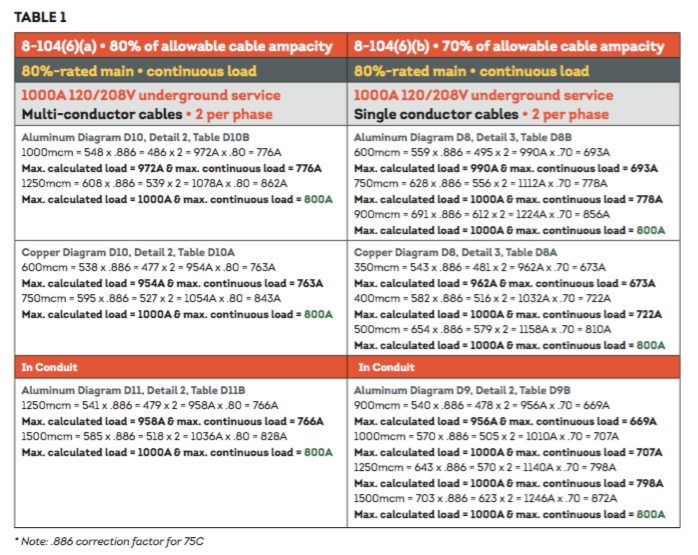
Features
Code File
Codes & Standards
Rule 8-104 Maximum circuit loading • David Pilon
April 11, 2017 | By David Pilon

April 10, 2017 – The 3rd Memorandum of Revision (MOR) is out, and Rule 8-104 is undergoing some significant changes. Subrule (8) has been deleted from the CE Code, and 8-104(5) and (6) have been rewritten. What does this mean for calculating cable sizes used in direct burial installations?
With the harmonization of our cable ampacity Tables with those of the U.S. (NEC), we’ve seen a number of changes come into play and, as with any code change, a number of Rules often need to be adjusted. Sometimes, not all of these changes are completed between editions.
CE Code Section 8 deals with circuit loading and demand factors, consisting of calculations used to answer “What do I need?” and “How am I going to use it?”. So the changes to 8-104 actually make sense because the Rule limits the continuous load on the conductor I have chosen (via Section 4)—regardless of the Tables I’ve used.
Enough babbling… let’s see what those changes really look like. We’ll start with common 80%-rated Breakers. Note: Rule 8-104(1) states the rating of the circuit shall be the ampere rating of the breaker or the ampacity of the conductors, whichever is less.
6) Where a fused switch or circuit breaker is marked for continuous operation at 80% of the ampere rating of its overcurrent devices, the continuous load as determined from the calculated load shall not exceed
a) Except as required by item (b) 80% of the rating of the circuit, where the allowable ampacities of conductors are selected in accordance with Section 4; or
b) 70% of the rating of the circuit, where the allowable ampacities of single conductors are selected in accordance with Section 4.
At first glance, it looks like I need to use multi-conductor cables to get the 80% rating of the breaker. While this is partially true, it is also important to review the difference in conductor sizes (which also affect this determination).
At this point, it is important to understand that, when installing larger single conductors, the maximum circuit loading capacity refers to the cable, not the circuit, as per 8-104(1). As soon as we choose multi-conductor cables, you can see the increase in conductor size to gain back the 10% max load capacity. Remember: unless otherwise indicated, your calculated load is considered to be a continuous load.
So cable selection really only begins when you know the continuous load. And by increasing single conductor size, you improve heat dissipation at the overcurrent termination point (which, as I understand it, is the reason for breaking out the single conductor cables, as the breakers are tested to Tables 2 and 4 in the standard.
Look at Table 1 for examples of some calculations to see what (I believe) is intended. Note the .886 correction factor for 75C. As always, remember to check with your local authority before commencing an installation according to this new requirement.
David Pilon has been an electrical inspector with SaskPower since 2000, and is currently the vice-chair of the Canadian Certified Electrical Inspector (CCEI) committee of the International Association of Electrical Inspectors (IAEI), Canadian Section. David can be reached at dpilon@saskpower.com.
* This article also appears in the April 2017 edition of Electrical Business Magazine. Check out our ARCHIVE page for back issues.
Print this page